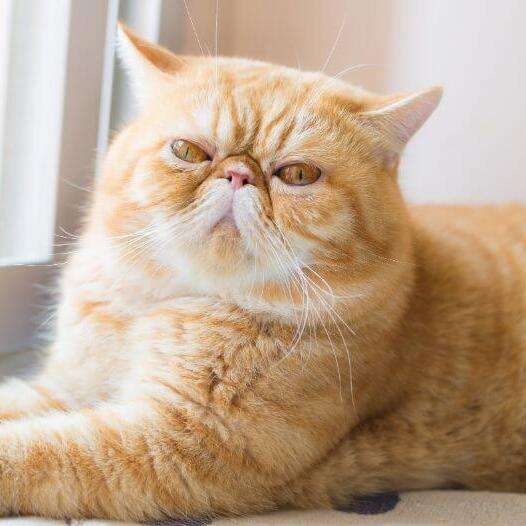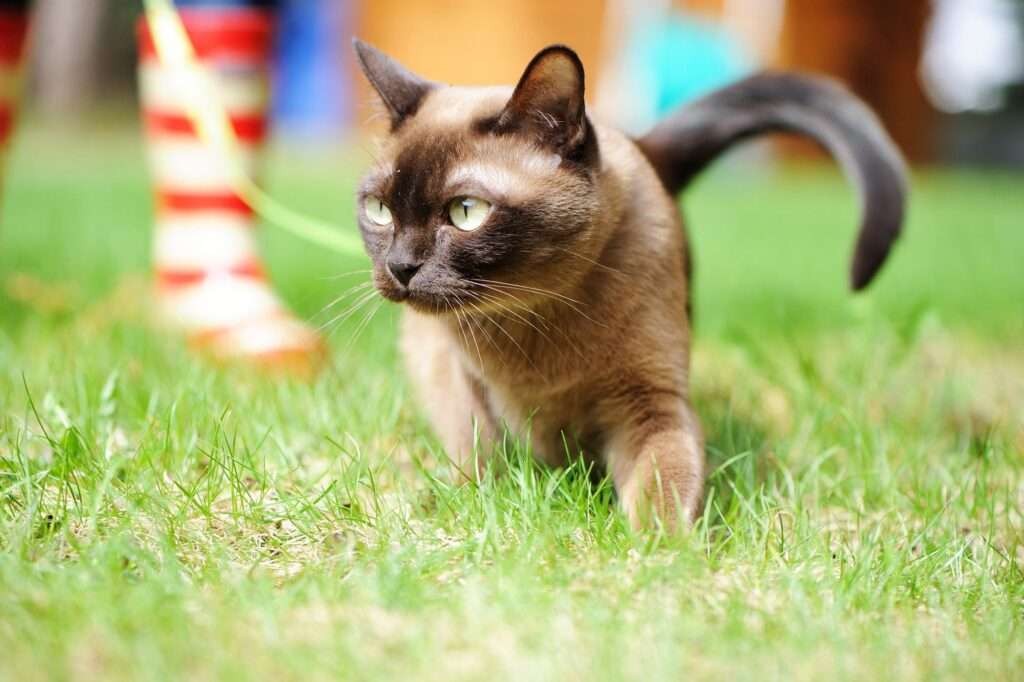
Description
Size: 7-14lbs
The Exotic cat is medium in size and has a stocky build. It has large wide eyes and a short nose that give it a characteristic and slightly unhappy appearance. Its round, broad head is somewhat out of proportion to its body. The small, wide-set ears emphasize the face’s size and roundness even more. The body is small and has short, robust legs, broad, tufted paws, and a short tail. The coat is short, luxuriously thick, and velvety with a deep undercoat.
It is bred in a remarkable variety of tones and patterns, including color points of the Himalayan variety.

Behavior
Activity Level: Moderate
Social needs: love being with family, energetic
The Exotic is charming, docile, and calm like the Persian, but just don’t think that they are only ornamenting the house. When they are not being patted or sitting on a lap, they enjoy playing. Exotics are more suitable for an active household because they are reputed to be more energetic and inquisitive than their Persian relatives. Some believe that males are friendlier and more loving than females, who are frequently depicted as reserved.
Origin/History
The Exotic Shorthair is essentially a more lightly coated variation of the longhaired, flat-faced Persian cat. The main distinction is the shorter coat, which has been deliberately bred for since the 1960s by mating the longhaired Persian cat with the chunky, round-cheeked British Shorthaired cat.
Care as a Pet
Exotic shorthairs are incredibly simple to groom, unlike Persians. While Persians need to be brushed and combed every day, exotic shorthairs only need to have their coats combed with a steel comb once or twice a week. The exotic shorthair rarely mats, knots, or tangles. Seasonal shedding means that the exotic shorthair requires more combing and bathing to eliminate dead hair and skin cells.
The flatter faces of exotic shorthairs make their eyes more prone to tearing and staining the surrounding fur. Washing the face of your exotic every day with a soft, dry cloth will help you avoid stains. Make an appointment with your veterinarian to check for an eye infection if your cat has red, crusty, or excessively discharged eyes.
You should regularly check your cat’s ears as you would with any breed. Use a soft cotton towel to remove waxy buildup and dirt. Cotton swabs should not be used as they can harm the sensitive inner ear components. Consult your veterinarian if your cat’s ears are red, inflamed, or smell strange. These could indicate an infection.
Nutrition and Diet
The food and nutritional requirements for your cat will mostly rely on its age, sex, size, and degree of activity. Your veterinarian can assist you in creating a healthy, balanced diet for your exotic shorthair if you’re unsure of how much or how frequently to feed him. You can also refer to the feeding instructions created by the manufacturer of the cat food you choose.
Obesity in cats can result from overfeeding, which has negative health effects. By giving a cat the right amount of food at set times throughout the day, you can help manage their weight as leaving food out all the time can encourage them to eat excessively.
Grooming needs
The luxurious coat of the Shorthairs exotic requires frequent brushing to eliminate dead hair because it can shed profusely. Exotic with long hair requires routine maintenance to prevent their lavish coats from developing uncomfortable mats. Additionally, since eye tears can leave stains, exotics need to regularly wash their faces and eyes.
Table





